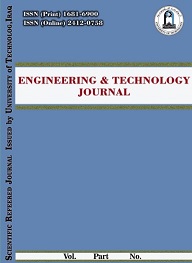Abstract
Understanding the size and morphological properties of particulate matter (PM) is essential to improve analysis of the process of PM formation in diesel engines. These will help to reduce undesirable environmental impact and health effects. A scanning mobility particle sizer (SMPS) and thermal gravimetric analysis (TGA) were used to study the changes in size characteristics of PM/soot and soot reactivity. Furthermore, improve the oxidation of soot particles in diesel engines is necessary under the range of different fuel combustions. Oxygenated fuels (e.g., ethanol blend, E10 and butanol blend, B16) were used in this experimental study to show how insignificant changes in morphological characteristics and activity of PM .
The oxidation and activation energy of PM was achieved at the lower temperature from the combustion of oxygenated fuels compared with diesel fuel combustion. Besides, it was found that both the size of soot particulate and the number of primary particles are reduced with increasing the oxygen content in oxygenated fuels than the diesel fuel. The shape of primary soot particle for PM is a bit more spherical in the case of diesel fuel than to the oxygenated fuels
The oxidation and activation energy of PM was achieved at the lower temperature from the combustion of oxygenated fuels compared with diesel fuel combustion. Besides, it was found that both the size of soot particulate and the number of primary particles are reduced with increasing the oxygen content in oxygenated fuels than the diesel fuel. The shape of primary soot particle for PM is a bit more spherical in the case of diesel fuel than to the oxygenated fuels
Keywords
Combustion
Diesel engine
Oxygenated fuel
Particulate matter
PM oxidation
Soot particles
TGA.
